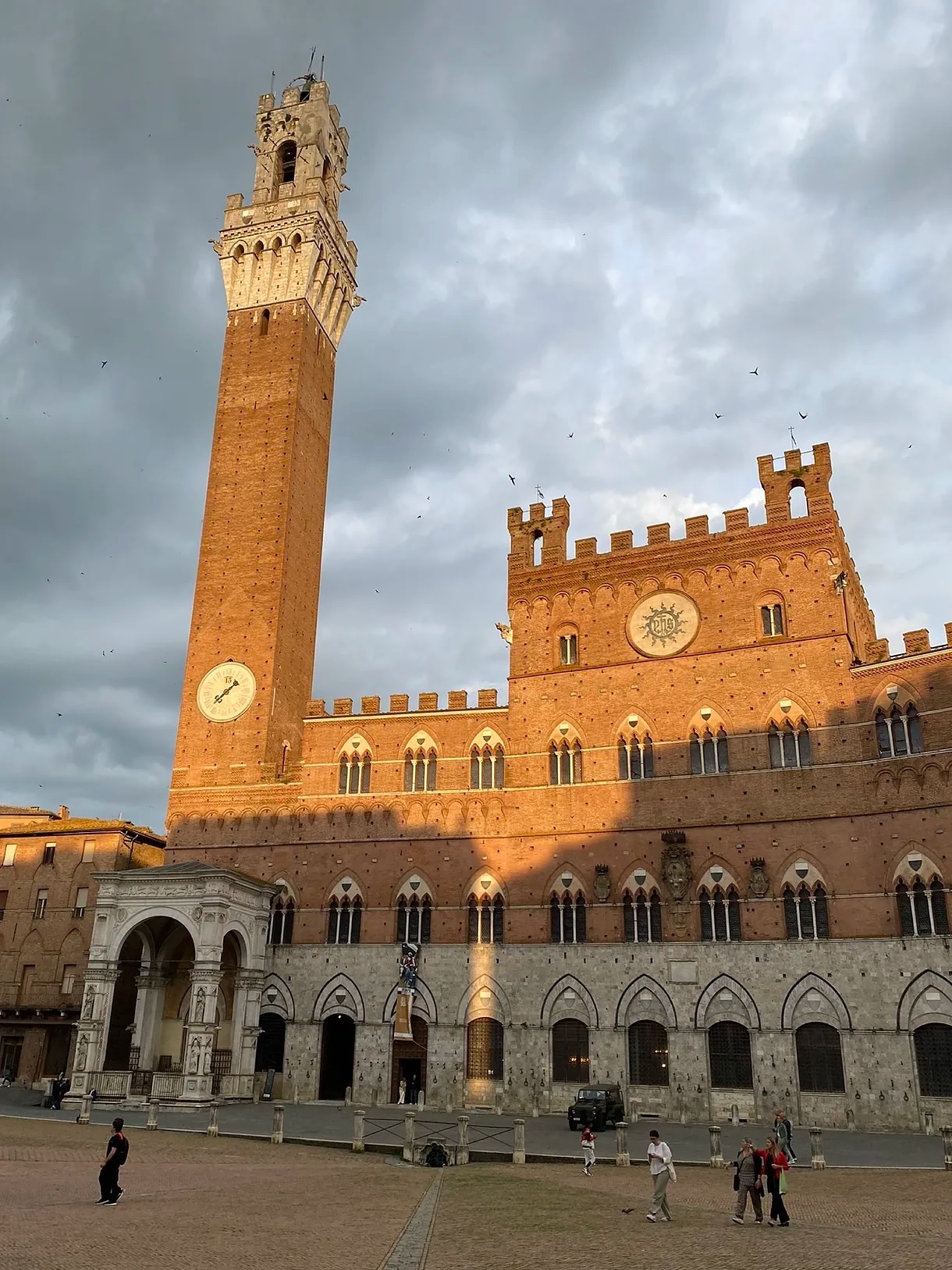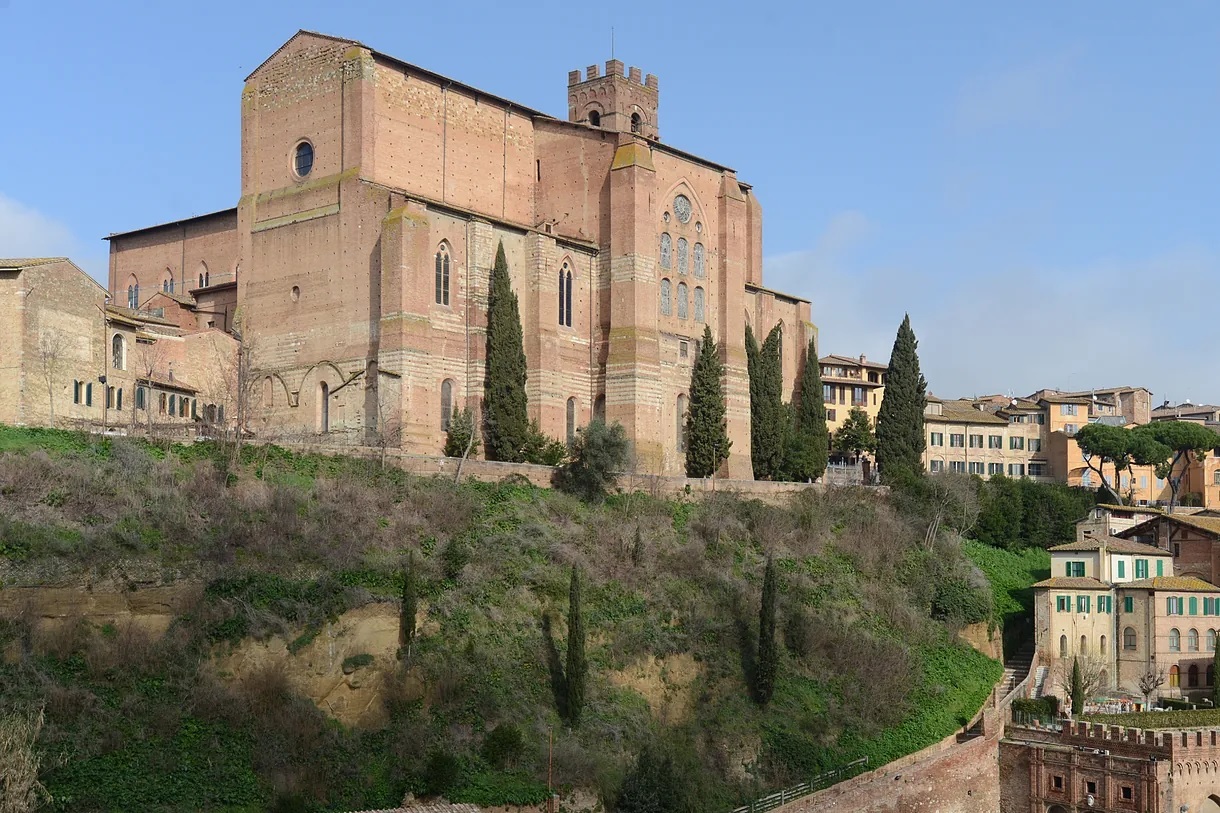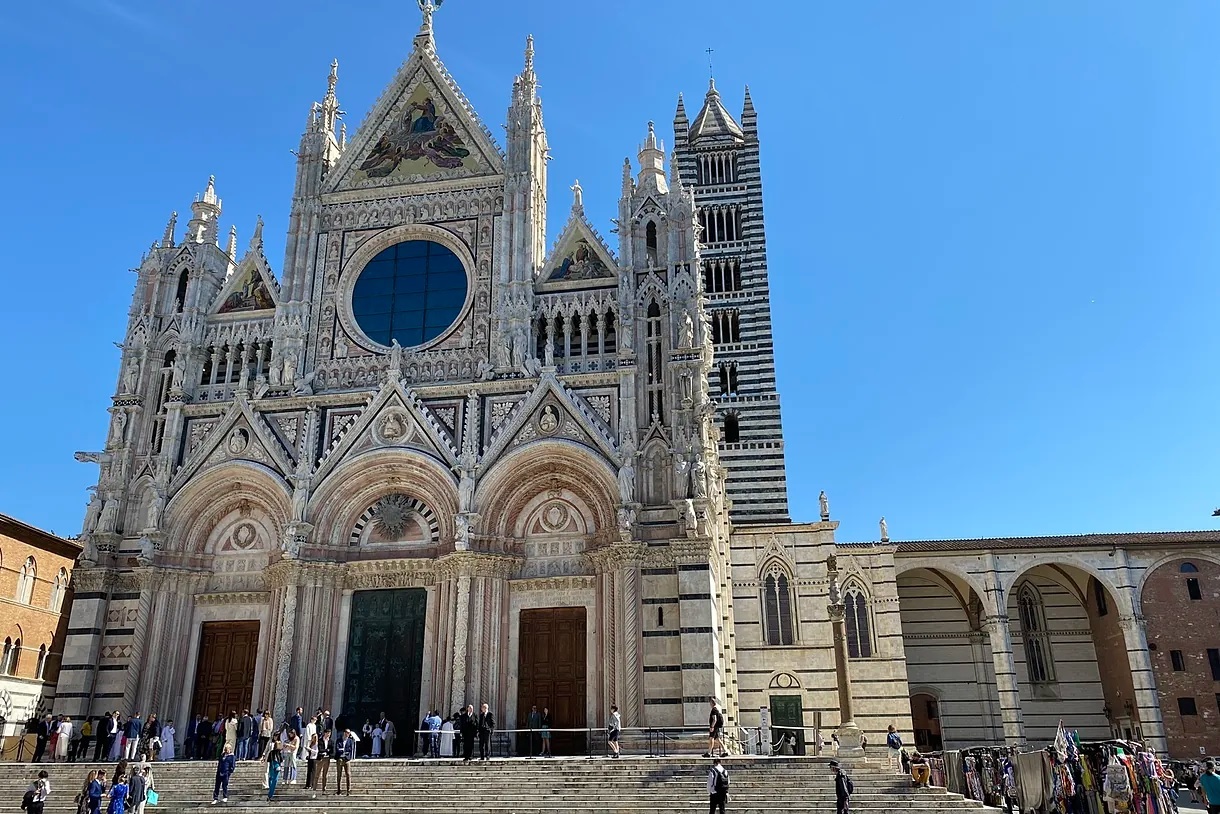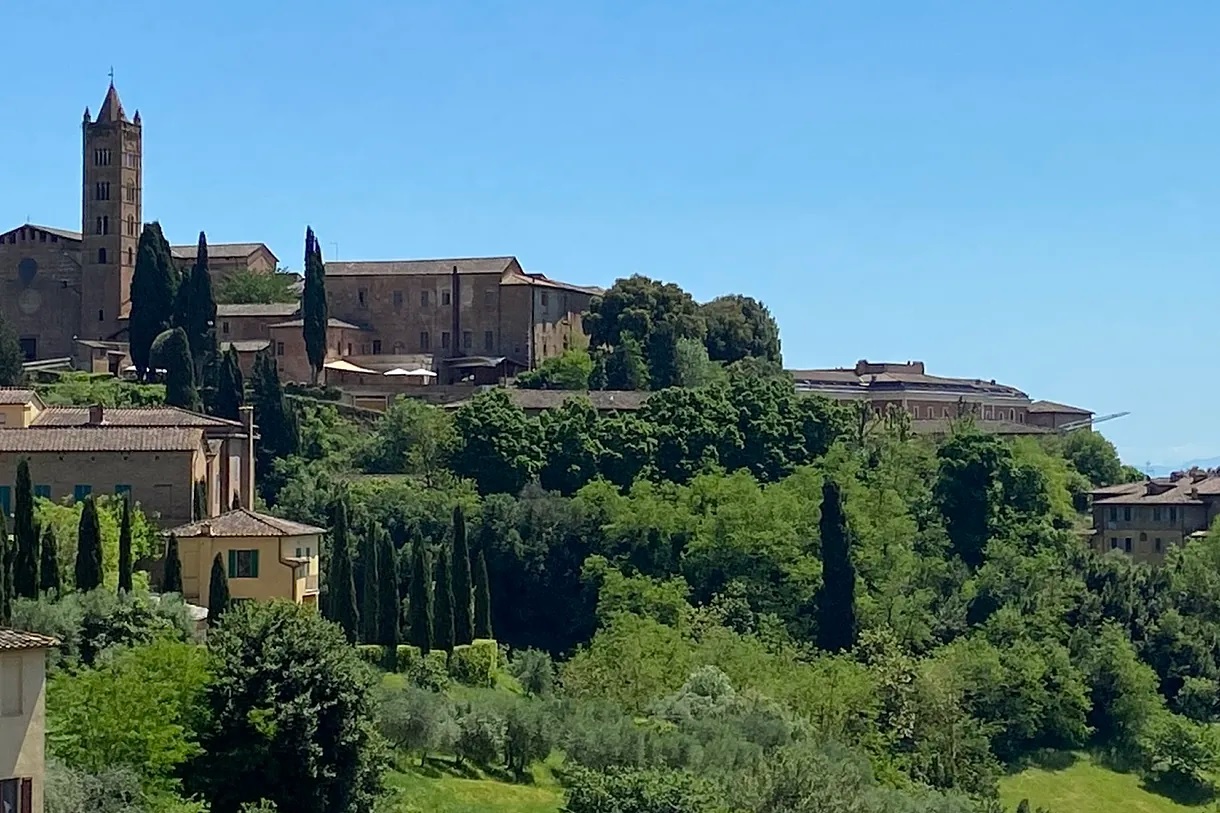Sometimes overshadowed by tourists in favor of the majestic Florence when visiting Tuscany, Siena stands imposing on top of a hill as the best alternative to experience a journey through time through the historic center of this city recognized as a World Heritage Site. Immersed in the heart of the idyllic Italian region, surrounded by valleys and green meadows, the charming walled medieval town offers a perfect combination of history, culture, architecture, and natural beauty. Along with its unique traditions, culinary excellence, and picturesque landscapes, the destination captivates all who visit.
After the crowded celebration of the Palio, the most emblematic and anticipated by the people of Siena, celebrated every summer since the Middle Ages, and freed from summer tourists, autumn is one of the best times to explore quietly, slowly, and on foot this small city founded by the Etruscans and whose landscape has remained almost intact for centuries. Comfortable footwear is a requirement for urban trekking through this town already characterized as slow.
During the tour, steep slopes, endless stairs, narrow alleys, palaces, cathedrals, squares, parks, churches... and even spectacular terraces where you can stop to taste typical dishes, a pasta pici (thick handmade spaghetti) and a ribollita (traditional Tuscan soup made with bread, vegetables, and legumes) and a local wine, while enjoying the best views of the city, such as the one from the restaurant San Domenico (Vía Camporegio, 17).
The Torre del Mangias is visible from all over the city.
Seven kilometers of perfectly preserved walls, the result of a long process of modification and expansion that began before the Middle Ages and ended in the mid-16th century, surround Siena. Up to nine gates provide access to its historic center, including the Gate of San Marco, Gate of Camollia, and San Cristóbal Gate.
Passing through the Ovile Gate, dating back to the 13th century, begins a journey into the past strolling through the maze of narrow and steep streets flanked by palaces, churches, and other medieval buildings erected during Siena's golden age that remain unchanged over time. The Palazzo Salimbeni (14th-century neo-Gothic), the imposing Basilica of San Domenico, a Gothic church begun in the 13th century famous for housing the head of Saint Catherine of Siena and other relics, or the Loggia del Pope Pius II, a 15th-century Renaissance arcade, are just some of the gems encountered by the walker in this open-air museum... until suddenly coming across the immense Piazza del Campo and realizing that it is probably one of the most impressive they have ever seen.
Considered one of the most beautiful medieval squares in Europe, Siena's most important and emblematic enclave is where the famous Palio di Siena is held every July and August, the traditional horse races that pit the different neighborhoods of the town against each other. The huge enclosed square is presided over by the Palazzo Pubblico, a red stone building constructed around 1297-1310 as the seat of government (now the municipal council). Its interior can be visited, as it houses the Civic Museum and a collection of frescoes.
Adjacent to the palace stands another Siena icon, visible from all corners: the Torre del Mangia, one of Tuscany's most famous towers built between 1325 and 1348. Standing at 87 meters high, it is crowned by a clock and a 6,764 kg bell, known as the Campanone, whose chimes still mark the most important moments in the lives of the Sienese.
In front of the palace is the Fonte Gaia, a Renaissance fountain whose waters come from the famous and ancient Bottini, an interesting underground hydraulic system of water supply dating back to the 13th century. To visit this labyrinth of tunnels, over 25 km long, about 1.80 m high, and less than a meter wide (not suitable for claustrophobic individuals), it is necessary to reserve the entrance here (price starting from 10 euros).
THE 'DUOMO' AND HIDDEN 'VALLEYS'
Another of the city's most visited sites is the Cathedral Square, with its imposing Gothic Cathedral from the 13th century, whose facade is clad in white and black marble. The interior, with mosaic floors, houses works by Donatello, Michelangelo, and Pisano. Opposite it stands the wonderful building of the former hospital Santa Maria della Scala. The huge complex is now a museum and exhibition center full of 15th-century frescoes and Renaissance art. There is also the Archaeological Museum.
The urban trekking transforms into a "rural" experience when tourists come across some of Siena's green spaces. Hidden within the city walls, the so-called valleys are magical places preserved thanks to the historical decision to leave those areas extending from the suburbs to the center untouched. These spaces have remained undeveloped over the centuries and still serve as green lungs nestled in the historic center.
Within the walls are the Valle di Porta Giustizia, the Valle dell'Orto Botanico, or the Valle di San Marco-Laterina. The Orto dei Pecci, overlooking the space below Piazza del Campo and the Market Square, is the largest. From this green countryside, some of the best views of the city and the Palazzo Pubblico and the Torre del Mangias from a different perspective can be enjoyed. There are also organic farms and orchards open to the public.
The city of Siena offers many alternative itineraries to explore the historic center on foot without any issues. Guided or self-guided tours that also reveal the most unknown corners of this museum city to tourists
(More information: visitsienaofficial.it)




